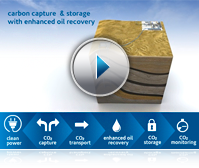California recognizes the importance of dramatically reducing emissions associated with conventional electrical power generation. The HECA project creates Hydrogen that is used to generate a reliable source of low carbon electricity.
This hydrogen fuelled power station would avoid over 2 million tons per year of greenhouse gases being released into the atmosphere by storing them underground in depleting nearby oil fields. The power produced will provide 150,000 Californian homes with low carbon and low emission electricity. This source of cleaner power would be a complement to intermittent sources of renewable energy.
The primary fuel to be used at the plant, petroleum coke (petcoke), is a by-product of the oil refining process which would normally be exported overseas. Using it locally in a clean way nearly eliminates the carbon emissions associated with its transportation and use overseas.
One of the concerns frequently raised in California is the use of drinking water by power plants. The HECA project would preserve the limited fresh water sources by only using brackish ground water for the plant’s processes. This ‘salty’ water currently negatively impacts local agricultural activity. The brackish groundwater will be supplied through a partnership with a local agricultural water district’s salt water remediation plan and will be treated on site to meet project standards.
The HECA project’s gasification process would feature near zero sulfur emissions during steady-state operation, meaning sulfur would also be captured rather than released into the atmosphere.
Wildlife and habitat surveys will be completed to put in place appropriate wildlife management systems. The HECA project will be designed, constructed and operated to high environmental, safety and health standards, including California and the San Joaquin Valley Air Pollution Control District emission standards.

